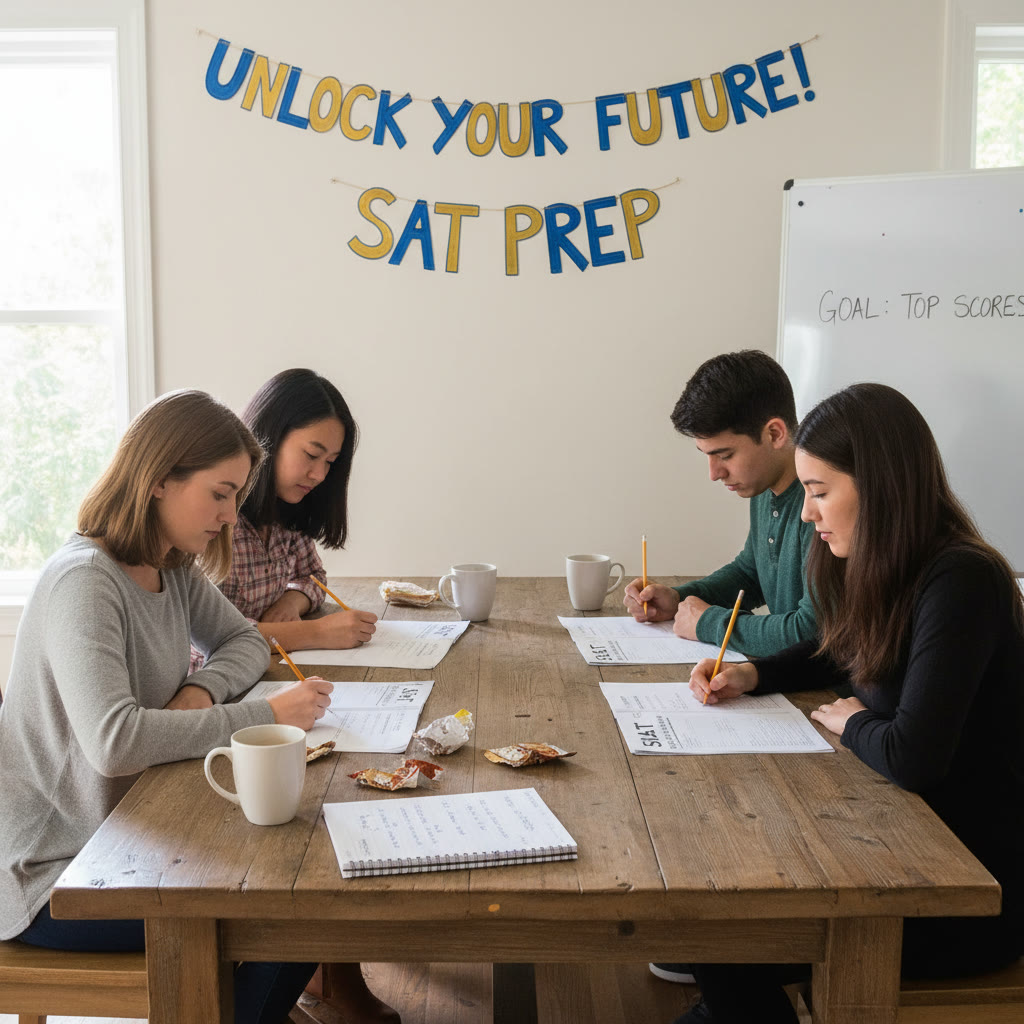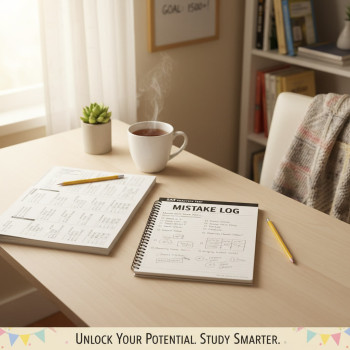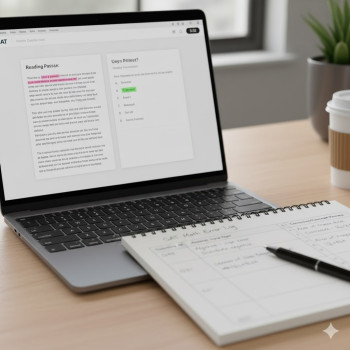Welcome: Why this guide exists
Take a breath. If the words SAT make your chest tighten a little, you are not alone. The SAT feels like a big, important thing because it can open doors to scholarships and colleges. But like any big thing, it becomes manageable if you break it down, practice the right skills, and follow a plan that fits your life. This guide is written for beginners: students who haven t taken the test yet or who feel lost about where to start. We ll walk through what the SAT actually is, how it s scored, what questions look like, and—most importantly—how to prepare smartly and confidently. Along the way I ll point out practical study schedules, time-saving strategies, and when it makes sense to get 1-on-1 help such as Sparkl s personalized tutoring with tailored study plans and expert tutors who use data and AI-driven insights to target your weak spots.
What is the SAT, in plain language?
The SAT is a standardized college-admissions exam that measures reading, writing, and math skills students typically learn in high school. Colleges use it as one piece of your application to compare students from different schools and backgrounds. The test is not a measure of your worth; it s a snapshot of certain academic skills on one day. You can improve that snapshot with practice.
Current structure and timing
As of recent formats, the SAT is divided into two main score areas: Evidence-Based Reading and Writing, and Math. The test runs about three hours in total. There is no longer a required essay. Below is a concise breakdown you can print and keep on your desk.
| Section | Time | Typical number of questions | Score range |
|---|---|---|---|
| Reading | 65 minutes | around 52 | 200 800 (combined with Writing) |
| Writing and Language | 35 minutes | around 44 | 200 800 (combined with Reading) |
| Math (No Calculator and Calculator) | 80 minutes | around 58 | 200 800 |
| Total | ~180 minutes | ~154 questions | 400 1600 |
Notice the score ranges: each main section converts raw correct answers into a scaled score between 200 and 800, and the two section scores add up to your total score, which ranges from 400 to 1600.
Quick facts you should remember
- There is no penalty for guessing, so answer every question.
- The optional essay has been discontinued in recent administrations, so you usually won t see it.
- The test rewards clear thinking and careful reading more than flashy tricks.

How to start: a realistic first two weeks
Begin with a checkpoint, not a judgment. Your first step is to take a timed practice test under realistic conditions. This baseline tells you where to focus. Don t panic if your first score is below your goal. Many students improve 100 300 points with a few months of focused work.
Two-week startup plan
- Day 1 2: Take one full-length, timed practice test. Score it honestly and record section scores.
- Day 3: Review the test focusing on wrong answers. Ask: did I misread? Did I run out of time? Was content unfamiliar?
- Days 4 10: Build habits. Do focused practice: three 30 45 minute sessions each day. Mix Reading passages, 15 20 math problems, and grammar practice.
- Days 11 14: Take a second full-length practice test. Compare results. Adjust your study plan to spend more time on the weakest area.
This quick plan gives you clarity: either you need more content review in math, reading practice to build stamina, or test-taking strategies. Many students find that a little 1-on-1 help accelerates the learning curve. With Sparkl s personalized tutoring you can get tailored study plans based on your baseline results, 1-on-1 guidance with expert tutors, and AI-driven insights that flag the exact question types costing you points.
Understanding the question types
It s helpful to know the flavor of questions you ll face. Let s break them into approachable categories so you can practice deliberately.
Reading
- Passage-based questions that ask for main ideas, evidence, inference, and the author s tone.
- Paired passages that require comparing viewpoints.
- Line-reference questions focused on specific phrases or sentences.
Writing and Language
- Grammar and usage edits: subject-verb agreement, pronoun clarity, punctuation.
- Conciseness and style: choosing clearer, more precise wording.
- Organization: improving paragraph-level structure and transitions.
Math
- Heart of algebra: linear equations, systems, manipulation.
- Problem solving and data analysis: ratios, percentages, interpreting graphs.
- Passport to advanced math: quadratic and higher-level algebra, function manipulation.
- Some geometry and basic trigonometry, often embedded in word problems.
Study plans by timeline
Different students have different windows. Below are three practical study plans: 3 months, 8 weeks, and last-minute 2 weeks. Pick one and adapt it to your schedule. Consistency matters more than marathon sessions.
12-week plan (best for steady improvement)
- Weeks 1 2: Baseline practice test and content review of weakest area.
- Weeks 3 6: Build skills with targeted practice and weekly full-section timed drills.
- Weeks 7 10: Take full-length practice tests every 10 14 days; analyze patterns; refine timing.
- Weeks 11 12: Final drills, review error logs, light practice the day before the test, rest well.
8-week plan (efficient focus)
- Weeks 1 2: Diagnostic test and daily focused practice sessions.
- Weeks 3 6: Alternate full sections and mixed practice; practice pacing.
- Weeks 7 8: Full-length practice tests each week; polish strategies and test-day routine.
2-week plan (last-mile sharpening)
- Days 1 2: Full practice test and immediate review.
- Days 3 10: Two to three targeted sessions daily focusing on the most commonly missed question types.
- Days 11 14: Light practice, no cram; rest, sleep, and review quick notes only.
Need a program that adapts to your progress? Personalized tutoring can compress this timeline by focusing only on the areas that matter for your score. Sparkl s expert tutors create study plans matched to your baseline and adjust them as you improve, which saves time and frustration.
Daily practice habits that actually work
Small, consistent habits beat irregular marathon sessions. Here are daily moves that compound.
- Do a short, timed Reading passage each day to build stamina.
- Work through 10 15 math problems and review the solutions carefully.
- Maintain an error log: write the type of mistake and what you ll do to avoid it next time.
- Practice pacing: learn approximate time per passage or question so you don t run out of time.
- Once a week, take a timed, full-length test to monitor progress and build endurance.
Test strategies: how to get through the test calmly and efficiently
Strategies matter. A calm, methodical approach often gains more points than knowing one more grammar rule. Here are reliable tactics with examples.
Reading strategies
- Preview the passage quickly to get the main idea, then attack questions with that big picture in mind.
- For line-specific questions, always read the surrounding paragraph to catch nuance.
- If two answer choices both look plausible, look for evidence in the passage rather than relying on what feels right.
Writing strategies
- Simpler is usually better: prefer answers that are concise and precise.
- Pay attention to transitions and whether the chosen wording fits the paragraph s tone and structure.
Math strategies
- Start with the easier problems. The math section is ordered roughly by difficulty, so capture the quick points first.
- Use estimation or plug-in numbers if algebra seems messy.
- Check units and diagrams carefully; a small misread can cost a whole problem.
Example question and walkthrough
Seeing one clear example helps more than abstract rules. Here s a short math-style item you can practice on your own.
Question A baker needs to arrange cupcakes on trays. Each tray holds 8 cupcakes. If the baker has 146 cupcakes, how many trays are needed so all cupcakes fit with no cupcake left untrayed?
Walkthrough Divide 146 by 8. 8 times 18 is 144, leaving a remainder of 2. That remainder means you need one more tray to hold the leftover cupcakes. So 19 trays are required. Answer 19. Quick tip: when a remainder exists, round up to the next whole tray because partial trays aren t allowed.
Common mistakes and how to avoid them
- Rushing through the first pass. Slow down and annotate the question so you don t misread key words.
- Ignoring the instructions on calculator usage. Know which problems allow a calculator and which do not.
- Failing to circle errors you commonly make. Your error log should be a reference during review sessions.
- Over-practicing low-yield problems. Prioritize the question types that appear more often and cost the most points.

Practice tests: how often and how to review them
Full-length practice tests are your best feedback. Frequency depends on your timeline. For a 12-week plan, one test every 10 14 days is ideal. For an 8-week plan, aim for one per week. In the final two weeks, take two tests spaced out so you can rest between them.
How to review a practice test
- First, score it to get honest section numbers.
- Then review every wrong answer and learn whether the error was knowledge-based, careless, or timing-related.
- Log these errors into categories and practice specifically on the categories that cost the most points.
Test day: a checklist and mindset
The day of the test is about calm execution. Here s a checklist and a short routine you can follow.
What to bring
- Admission ticket or ID as required by your testing center rules.
- Two or more No.2 pencils and an eraser.
- Approved calculator with fresh batteries and a backup if you own one.
- A watch to manage pacing if allowed, and a small snack for break time.
Before you enter the room
- Eat a balanced meal, stay hydrated, and avoid cramming at the last minute.
- Warm up with one short practice passage and a few math problems to get your brain into test mode.
- Arrive early so you don t start flustered.
During the test
- Start with a quick strategy: take the easy questions first, flag harder ones, and return if time allows.
- Remember: no guessing penalty. Make an educated guess if you re unsure.
- Keep an eye on time but focus on one question at a time to avoid panicking.
When to consider personalized tutoring
Some students improve a lot on their own; others benefit from targeted, one-on-one help. Consider tutoring if you:
- Are stuck at a plateau despite regular practice.
- Need an efficient study plan because of time constraints.
- Prefer feedback on pacing and test-taking habits as much as content knowledge.
A good tutor doesn t just teach content; they coach you through the test as a process. Personalized programs like Sparkl s offer tailored study plans, expert tutors who explain where you re losing points, and AI-driven insights that identify the exact question types to focus on. That targeted approach can save weeks of practice that might otherwise be spent on low-yield work.
Beyond test prep: putting scores into context
Your SAT score is one part of your college application. Good grades, compelling essays, activities, and recommendations all matter. Think of the SAT as a way to present a strong, test-day snapshot of skills colleges value. Treat prep as a chance to strengthen your academic habits and your endurance for longer, focused work—skills that will help in college and beyond.
Final pep talk and next steps
If you re just starting, you already have the most important tool: time. Use it to form steady habits, review thoughtfully, and practice with purpose. Celebrate small wins along the way: finishing a full practice test, conquering a tricky concept, improving your pacing. Keep an error log, follow a study plan that fits your life, and get help when you need it. Whether that help comes from a teacher, a mentor, or Sparkl s personalized tutoring with 1-on-1 guidance and tailored study plans, targeted support can help you progress faster and more confidently.
Remember: the SAT is scored on a single day, but preparation is a story you write over weeks. Make your story intentional, keep perspective, and treat each practice session as a step closer to the score you want. You ve got this.
Ready to begin?
Start with one timed practice test this week, make an honest checklist of what tripped you up, and build a two-week plan from there. If you want help turning that data into an efficient path forward, consider reaching out for personalized guidance. Focus, practice, and calm will carry you a long way.
















No Comments
Leave a comment Cancel